Conservation
Heritage Consultancy
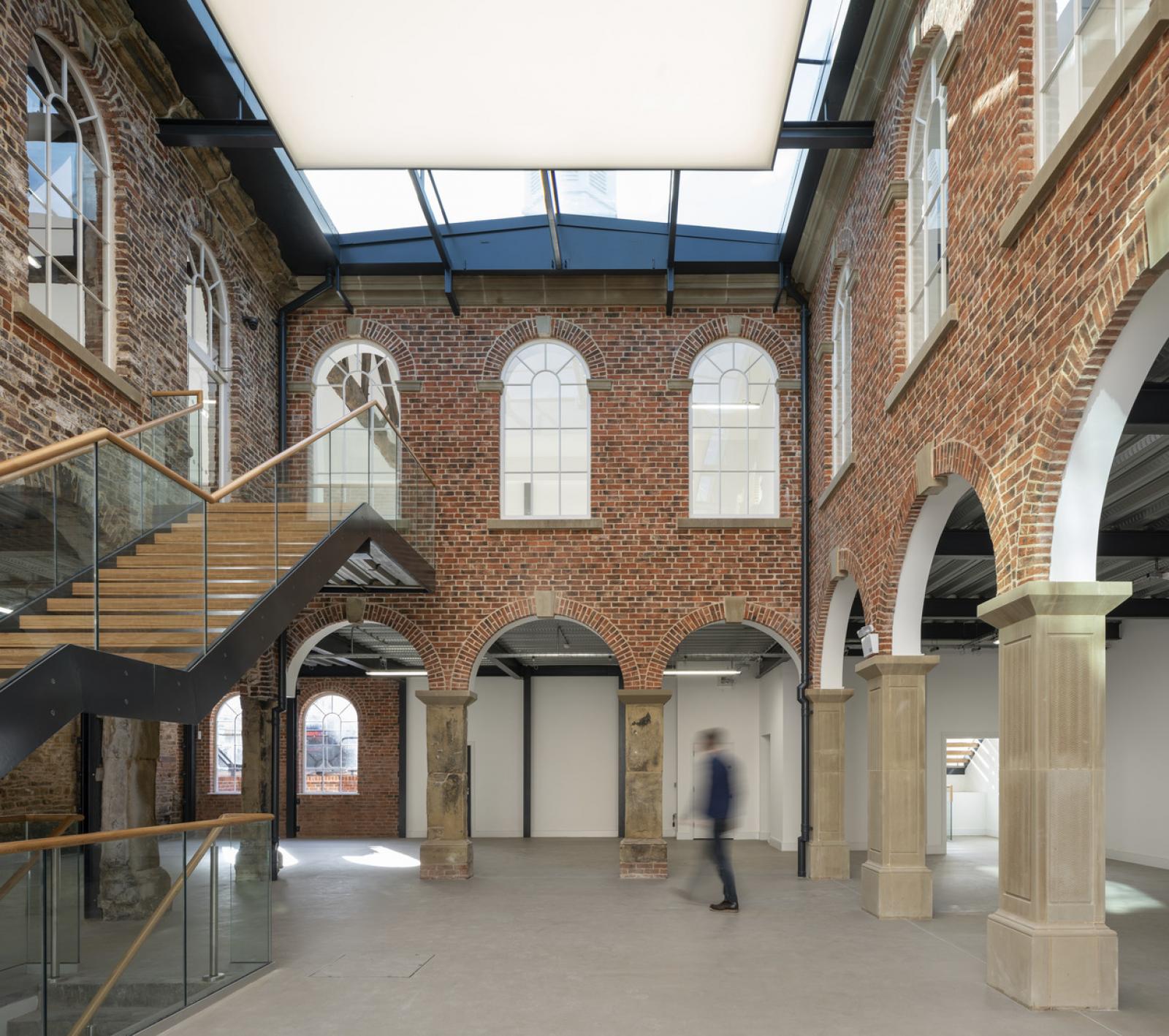
First White Cloth Hall is a Grade II* listed building located on Kirkgate, Leeds’ oldest street. It was rapidly built in 1711 in response to the building of a covered cloth hall by the nearby rivalling merchants of Wakefield a year earlier.
As the then town’s first covered hall for cloth trading, the building played a significant role in establishing Leeds as a dominant force in the textile industry.
Despite its significance to the industrial heritage of Leeds, the building fell into disuse over time and sections were demolished on safety grounds.
As part of the Lower Kirkgate Heritage Initiative, Buttress was appointed in 2015 to identify a suitable, viable way forward for the building. Buttress’ continual involvement has seen the building undergo extensive restoration and repair from the initial feasibility stages through to its recent reveal as a relevant and important commercial space once more.
After more than 20 years, First White Cloth Hall has a new future, and this historically significant building has been removed from Historic England’s ‘Heritage at Risk Register’.
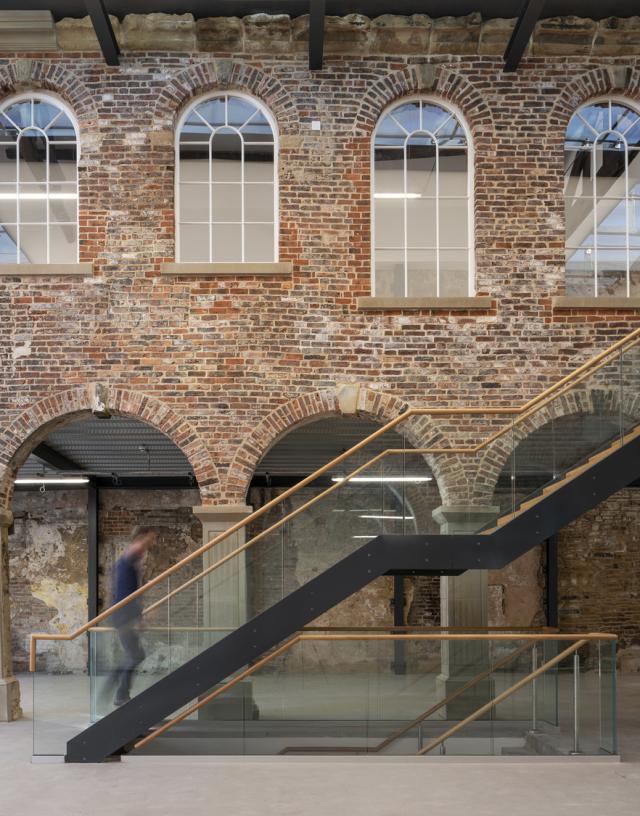
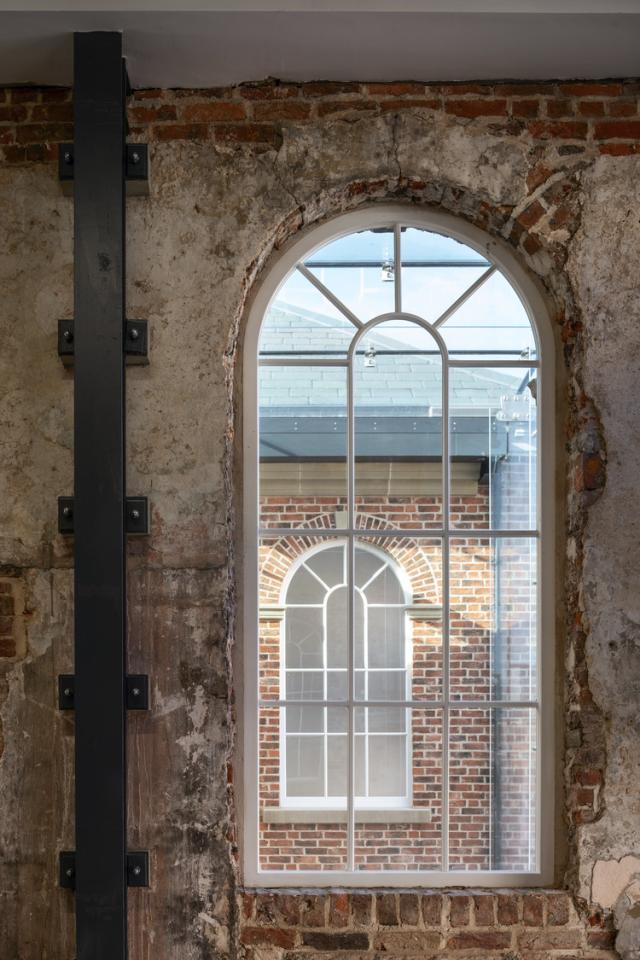
Heritage Consultancy
We were commissioned to produce a Conservation Plan for the building, which used remaining fabric evidence, documentary research and site analysis to piece together the building’s history and significance.
The report then fed into the Options Appraisal and identified issues and opportunities facing the site. It was used to optimise the potential of First White Cloth Hall as a significant building within Leeds’ cultural landscape, and helped guide the development.
Approach
The process of unlocking the history of the building and then developing a design for a new use was a complex yet fascinating challenge.
Central to the conservation and design approach was the importance of telling the full story of the building through the retention of its surviving tapestry of historic detailing. Where new elements have been introduced, they have been designed to enhance the significance of the building’s heritage, whilst also representing a new chapter of its story.
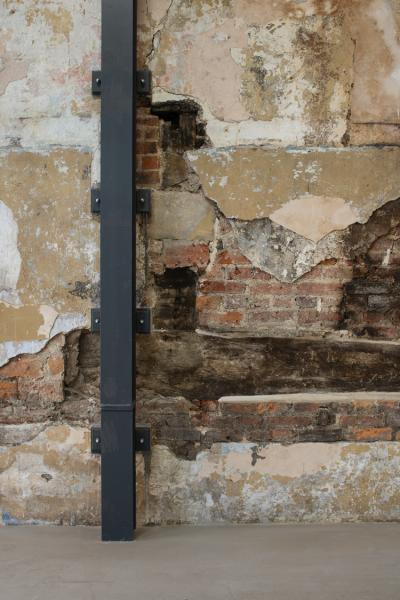
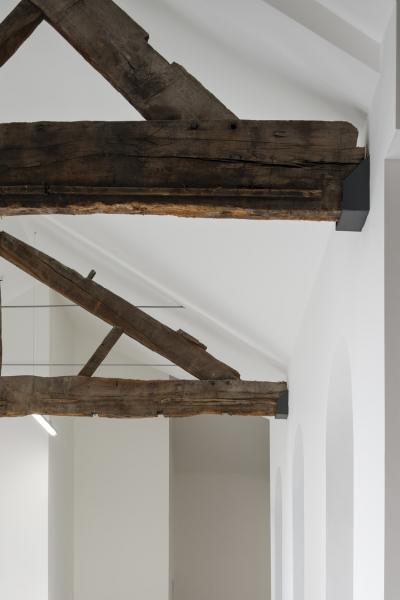
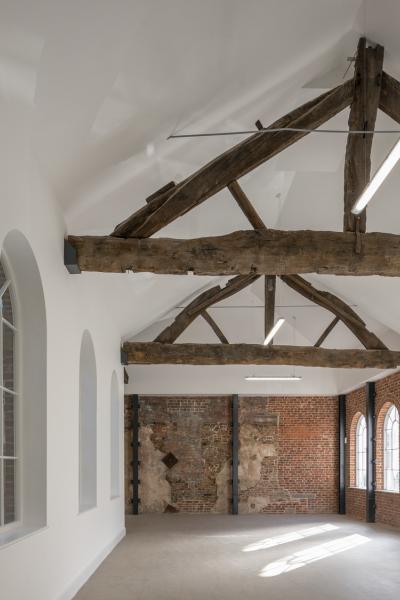
Internal Restoration
A new structure was built and expressed internally to support - and act as a visual counterpoint to - the existing structure. Where possible, surviving elements of the original brick and stone walls have been conserved and incorporated into the new designs, leaving a raw, textural character to the interior spaces.
The original oak timber trusses, which play a significant part in the building’s heritage, have been salvaged and incorporated into the roof structure as an interpretive element. Dendrochronological (tree-ring dating) analysis of the trusses has found that, whilst there are some that date to the original construction of the building, there were others that could potentially be traced back to the mid 14th century - much earlier than expected, given the opening of the cloth hall in the early 18th century.
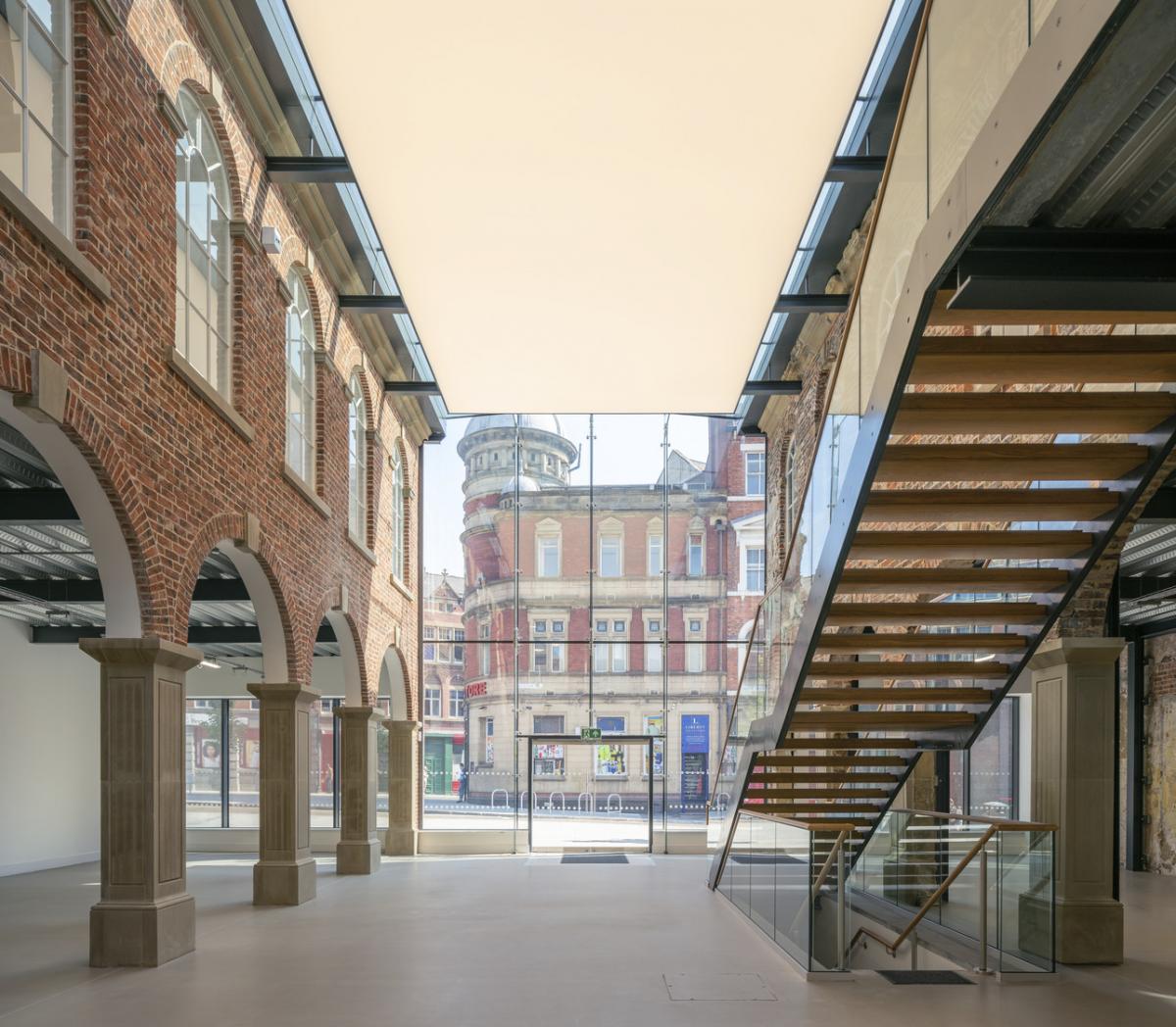
Atrium
Historic plans of First White Cloth Hall show that the central courtyard - in which the trading of textiles would have taken place - originally had an open plan. Our designs have seen the covering of the central courtyard and the creation of a central, top-lit atrium that reveals the original building form and animates the space that was originally a hub of activity.
The historic fabric of the courtyard is also enhanced by a new floating ‘plenum’, which has been incorporated within the profile of the atrium roof. The diffuse lighting effect provided by the plenum serves to reduce reflection from the glazed curtain wall, as well as conceal new structural elements within the atrium.
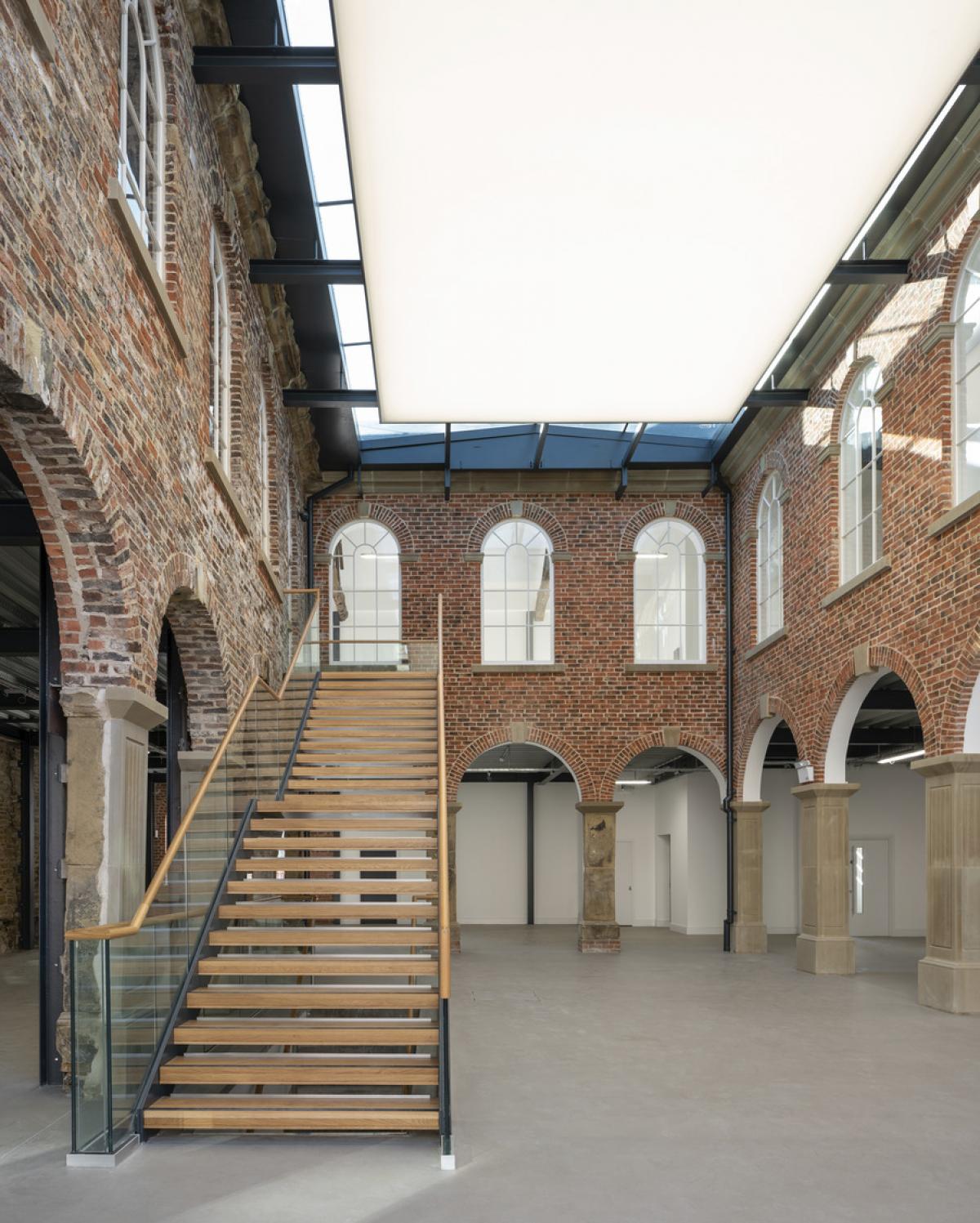
West Wing
The restoration also included a complete reinstatement of the original West Wing, which was lost during demolition in 2010. The reintroduction restores the building’s original symmetry and reinstates the U-shaped floor plan - a key feature from the 1711 design.
The project also involved a rigorous approach to sourcing new, suitable materials that sit comfortably and alongside the surviving fabric, including brick walls, sandstone columns, keystones and cornices. A unique pattern of brick bonding has been used to reflect the original brickwork in the West Wing.
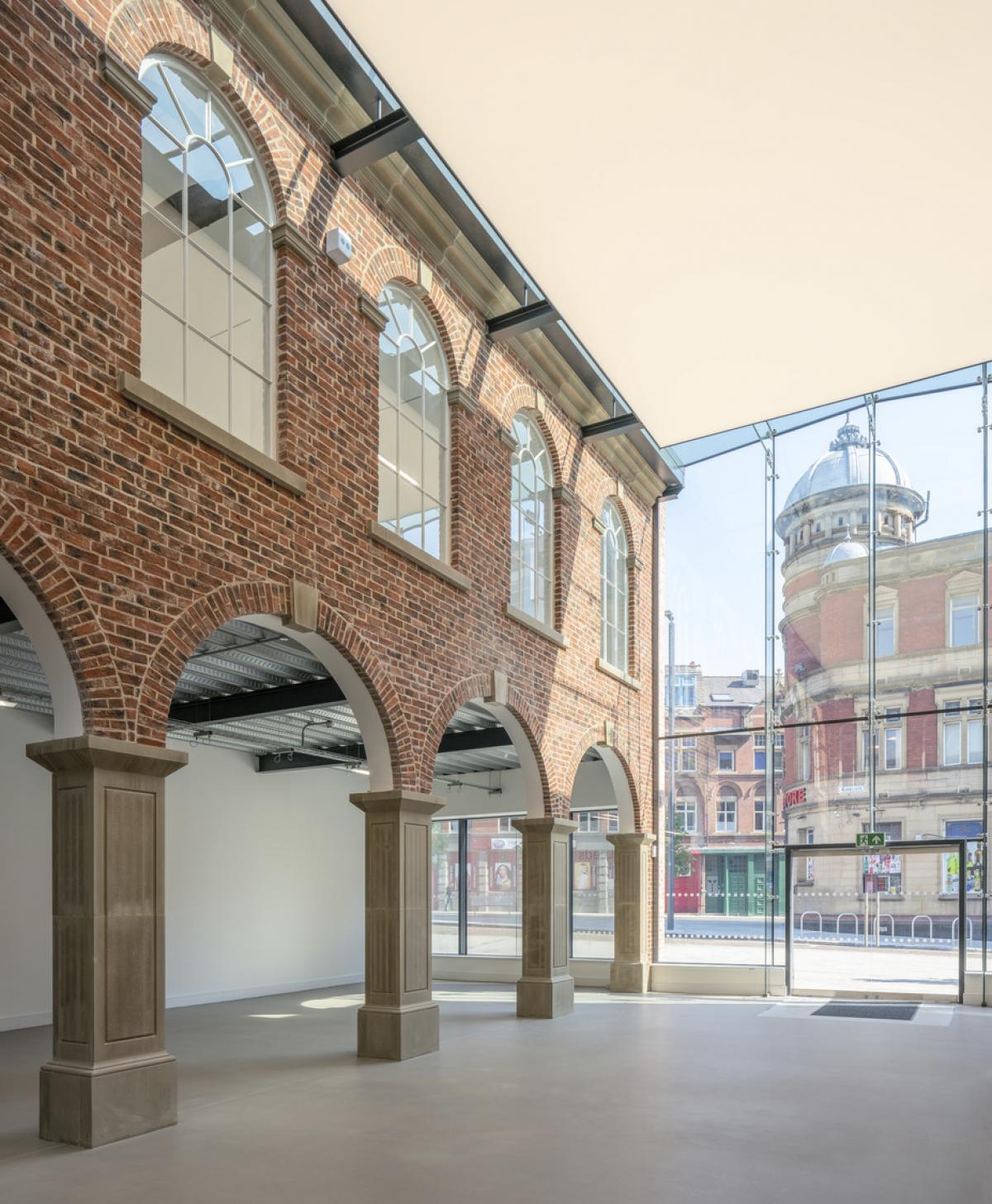
External Restoration
The addition of a new circulation core on the building’s southern elevation provides a new physical and visual link to Leeds’ Crown Square and Corn Exchange.
This transparent, cube-like structure is an overtly contemporary intervention of the southern elevation that introduces new material to the overall palette, providing an attractive entrance and focal point to those approaching the building from the south.
The frontage of the building includes a reinterpretation of its Victorian shopfront designs and proportions, whilst at the same time being readily legible as a contemporary intervention through a blending of material palettes.
The shopfloor treatment and consistency across both wings allow the Hall to be legible as a single, coherent building, whilst also emphasising its importance in the Kirkgate streetscape.
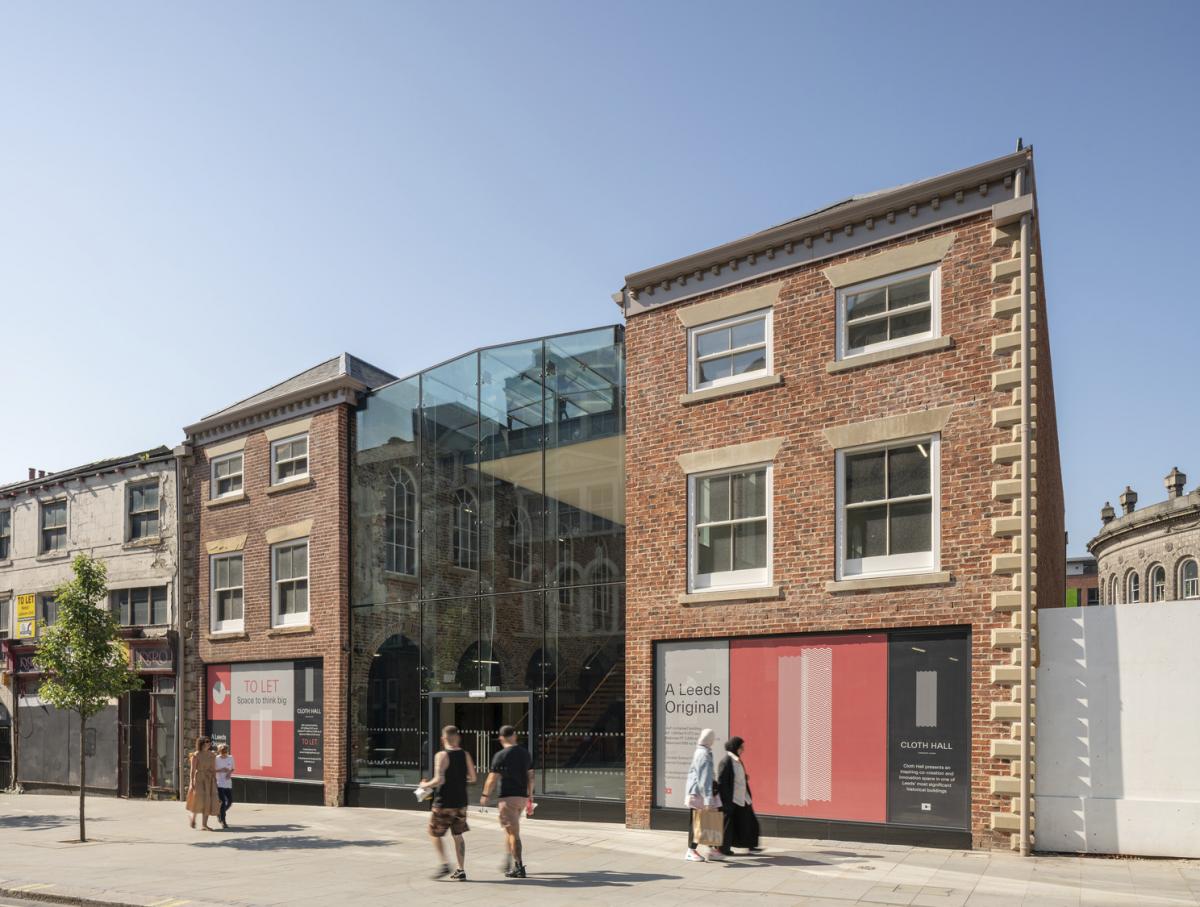
Awards
The Yorkshires 2022: Winner of the Disruptor Award
Yorkshire and Humber Constructing Excellence Awards 2022: Shortlisted in the Conservation and Regeneration category
Manchester Society of Architects Awards 2022: Winner of Best Commercial Project
Yorkshire Insider Property Awards 2022: Winner of the Restoration and Renovation of the Year Award
Image credits
© Gavin Stewart
Grant Prescott
Grant is an AABC-accredited conservation architect who specialises in the sensitive restoration and redevelopment of historic and listed buildings.
